Jamaica 2023 Gold Cup Tactical Preview
- All Angles Football -
- Jun 22, 2023
- 6 min read
New Reggae Boyz coach Heimir Hallgrímsson will have his Jamaica side compete in their first tournament under his leadership in this year’s CONCACAF Gold Cup. With Mexico’s footballing structure in chaos, and the USA sending a mostly domestic/second string team (still strong), Jamaica could face a true opportunity. With one of their strongest squads in a while featuring Demarai Gray, Michail Antonio, Leon Bailey, Bobby Reid, Ethan Pinnock and company, Jamaica will be hoping to pass the hurdle that they were unable to in the 2015 and 2017 Gold Cups.
Since Hallgrímsson has been at the helm in September 2022, there has been only one competitive match with the rest being friendlies seeing multiple new players brought into the pool and evaluated. Due to only one match of seeing regular starters play together, and no wins since taking on the job, the questions many are asking in Jamaica is what to expect from Hallgrímsson and his team when his strongest squad is utilized in competition, which is what the Gold Cup will answer. However, based on the matches played so far against: Argentina, Cameroon, Trinidad and Tobago, Qatar, Jordan and Mexico, this article seeks to preview and examine the basic core principles that Jamaicans can expect from Hallgrímsson’s team in the 2023 Gold Cup, which may be a true opportunity to carry the trophy home.
Out of Possession: Organized, Disciplined 4-4-2
The core principle of Hallgrímsson’s teams e.g. Iceland 2018, are to be pragmatic and defend in an organized, disciplined manner and then seek to punish opponents through set pieces and counter attacks. Hallgrímsson’s staple is setting up his sides in a 4-4-2 mid-low block out of possession, and it is the same that he has done with Jamaica so far. The general aim of the 4-4-2 mid-low block is to constantly force the opposition wide and backwards. This is the general idea of having 2 strikers as the first line of defense and is something that was seen in the game against Jordan even when a 4-3-3 in possession was tried (hence the 3 CMs) the team still defended in a 4-4-2.
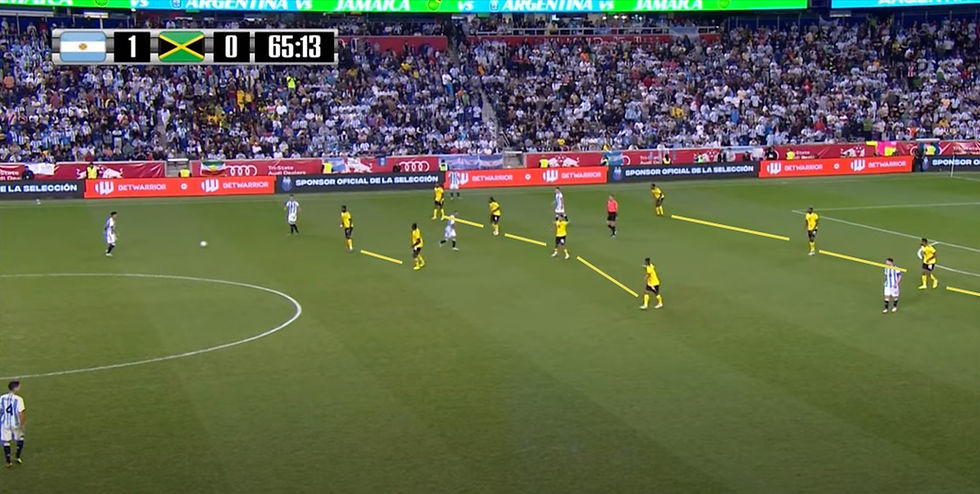
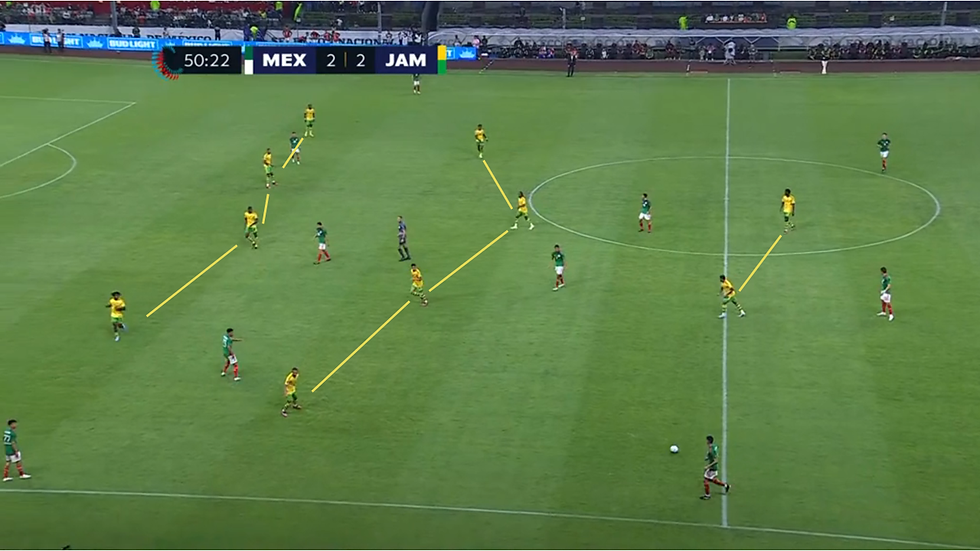

The reasoning behind this is that as the 2 strikers press opposition CBs and close central passing lanes, they are able to force the opposition wide, once the opposition is forced wide, it acts as a trigger where the WM or FB on that side, aggressively steps up and presses to then attempt to force the opposition back once more. An example from the game against Jordan is shown below.
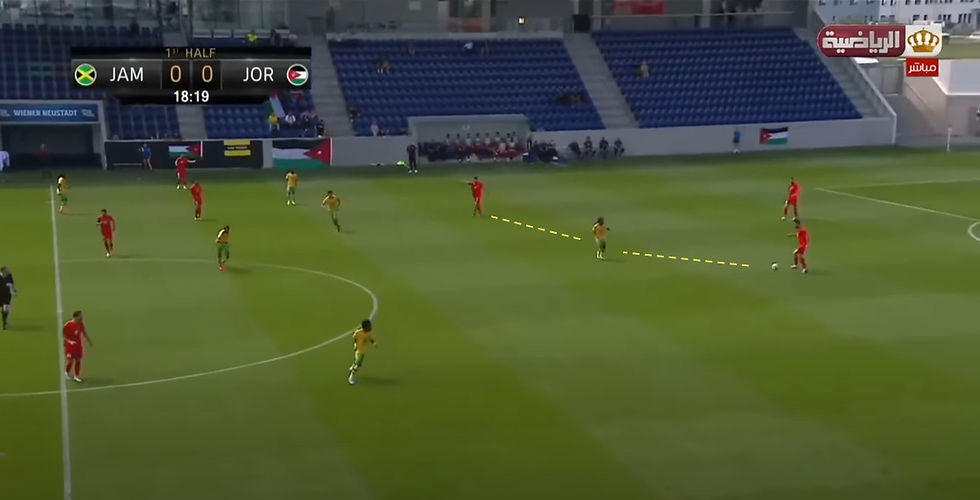

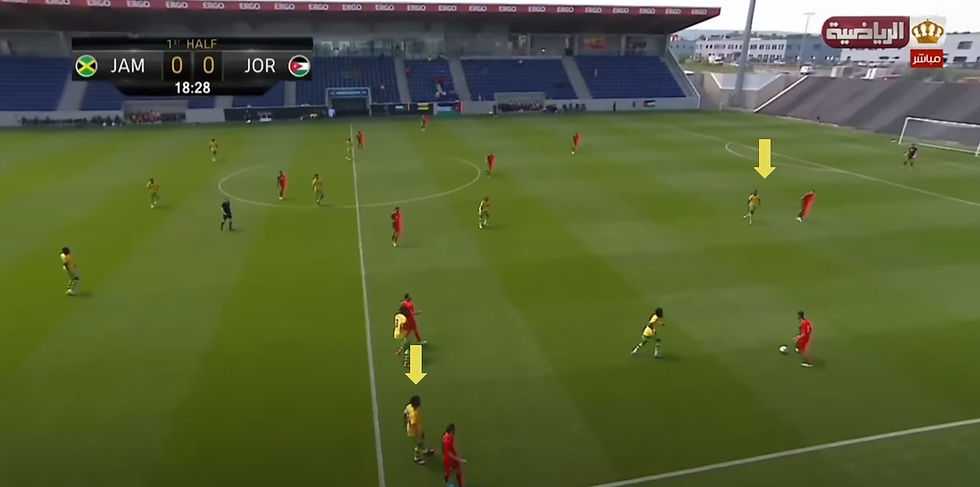
In this system, all players are expected to work off the ball and this starts with the pressing and defensive work of the STs and then the expectation of WMs to run back and support their FB. The two images below, display the commitment to defending from everyone on the team. In this sequence against Mexico, Bobby Reid (bottom right) and Leon Bailey rotated positions. As Lembikisa stepped up to press Jesus Gallardo (#23), and was beat Leon Bailey instantly made the recovery run to support Lembikisa and won the ball. This is also another demonstration of the point made above of trying to force the opposition wide and backwards.
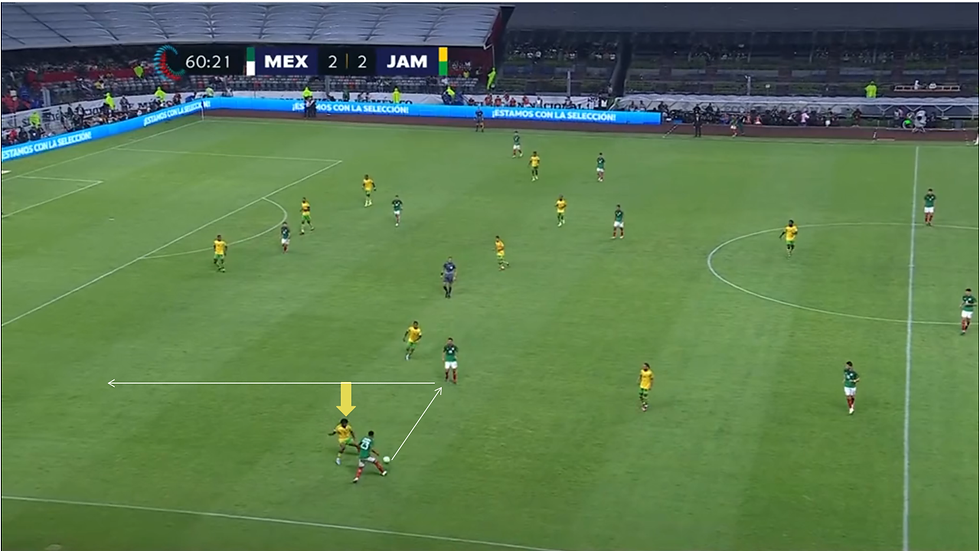
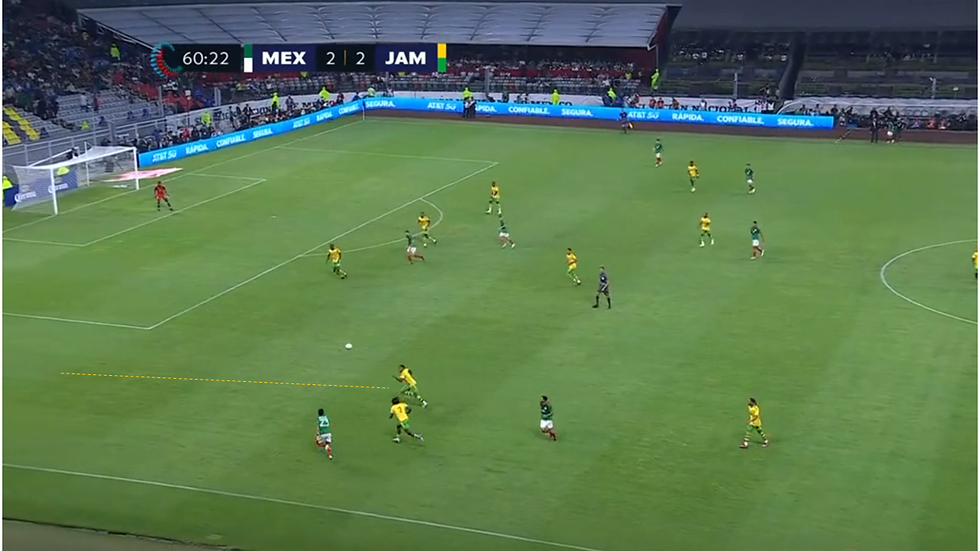
When the opposition are attacking and get deep into Jamaica’s half, the defensive mindset is priority with at least 8 or 9 players usually in and around the box putting in work off the ball with usually just 1 or 2 of the STs left up front for counter attacks. This was seen multiple times against Mexico in the Nations League and an example is pictured below.


This commitment to an organized, disciplined defense, is evident in the transition from attack to defense when Jamaica loses the ball as the immediate reaction is to run back and get back behind the ball as quickly as possible. The pictures below show a sequence against Qatar and one against Argentina where the ball was lost and the instant reaction by all players to immediately turn face the ball and track back as quick as possible.
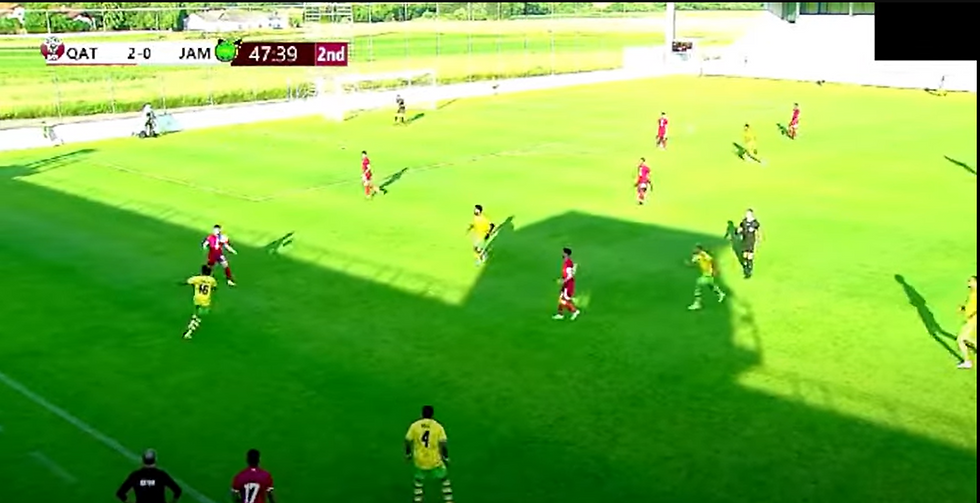

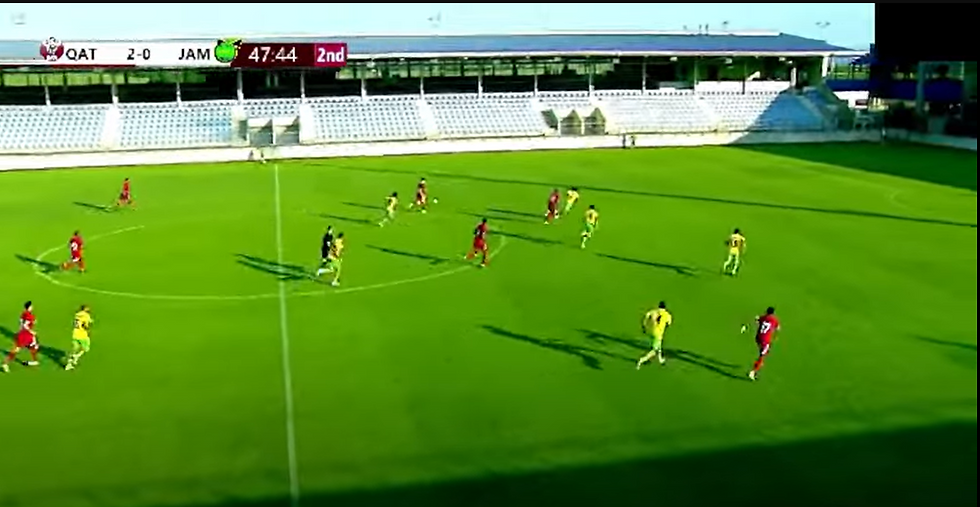
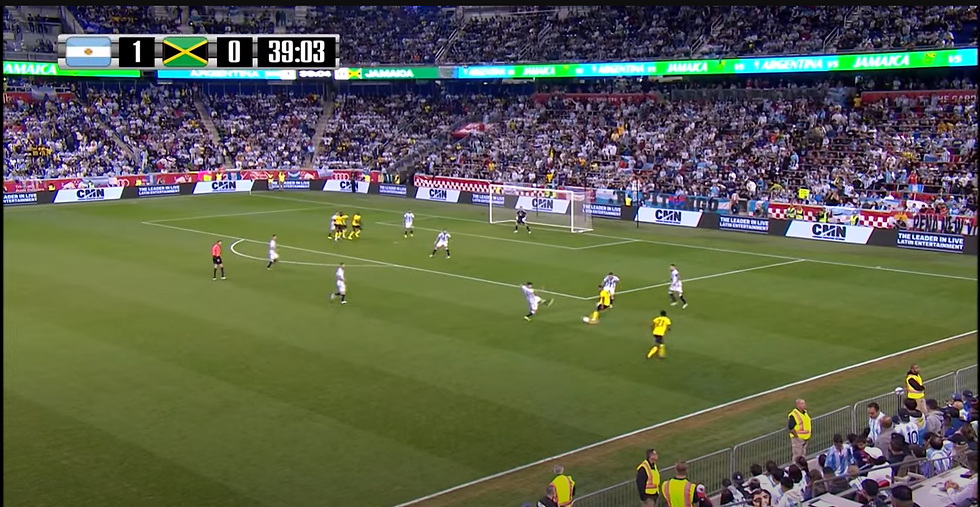
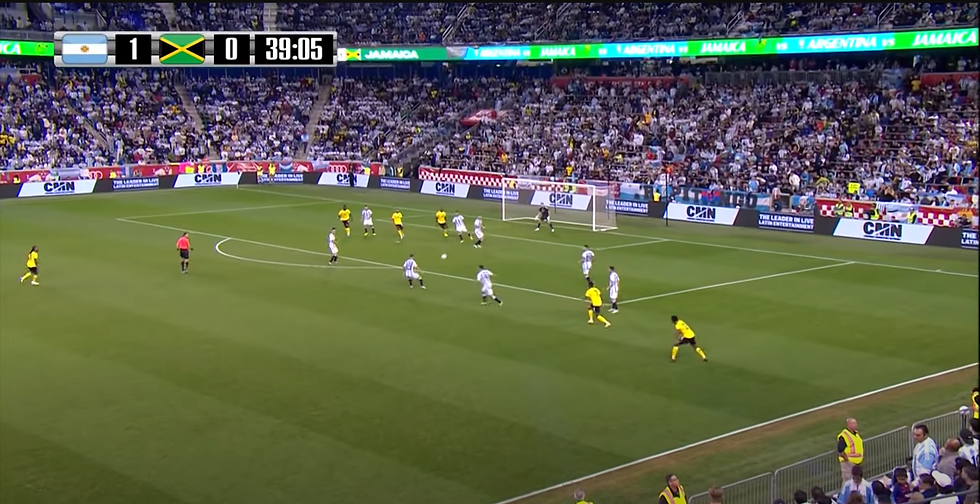

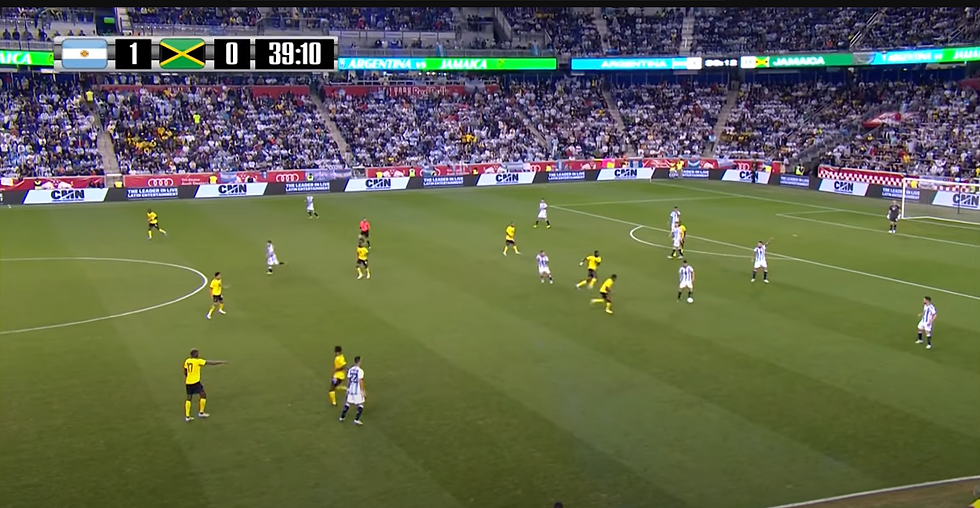
In Possession: Route One
When in possession, Hallgrímsson’s Jamaica play very direct. Most chances are created through long balls, set pieces or counter attacks. There does not tend to be much intention to play a slow, intricate passing game but more so a few passing sequences between the mainly the FBs, CBs and GK which leads to a long ball up front looking for flick ons, second balls and getting the ball into dangerous areas. Take for example, Bobby Reid's stunner against Mexico which came through a goal kick.

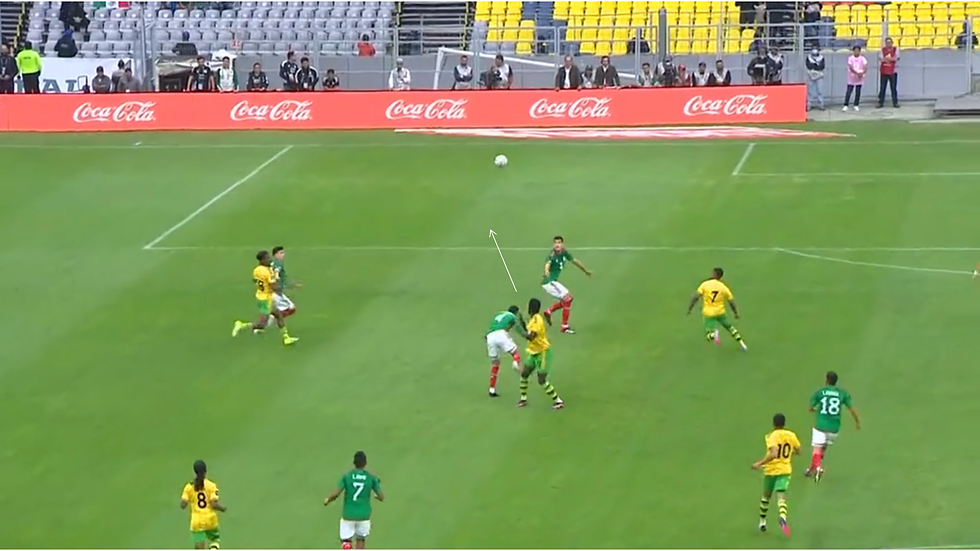


Take for example two more direct plays from the friendlies against Jordan and Qatar.
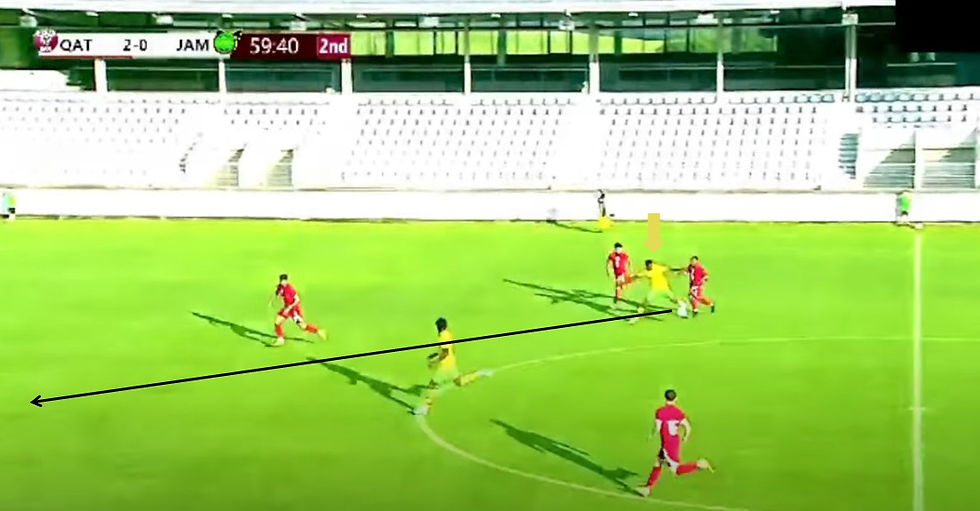
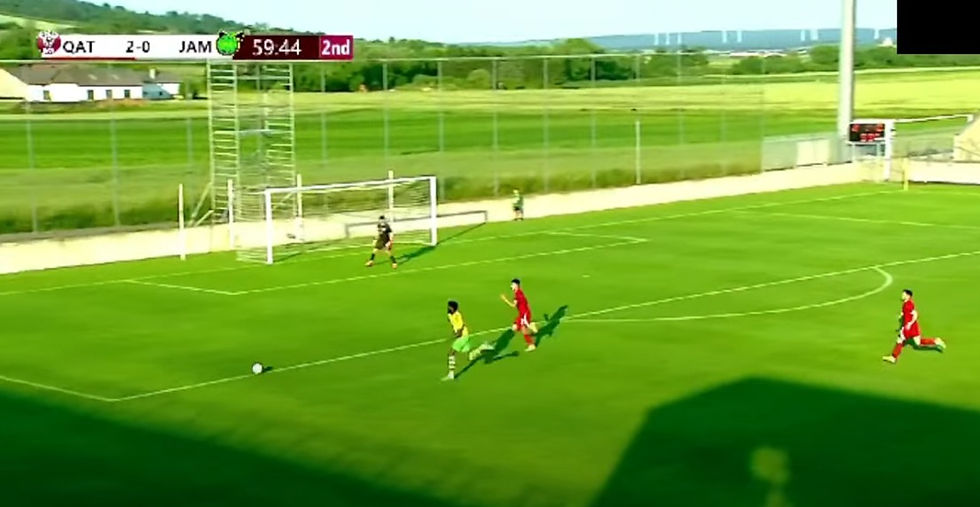
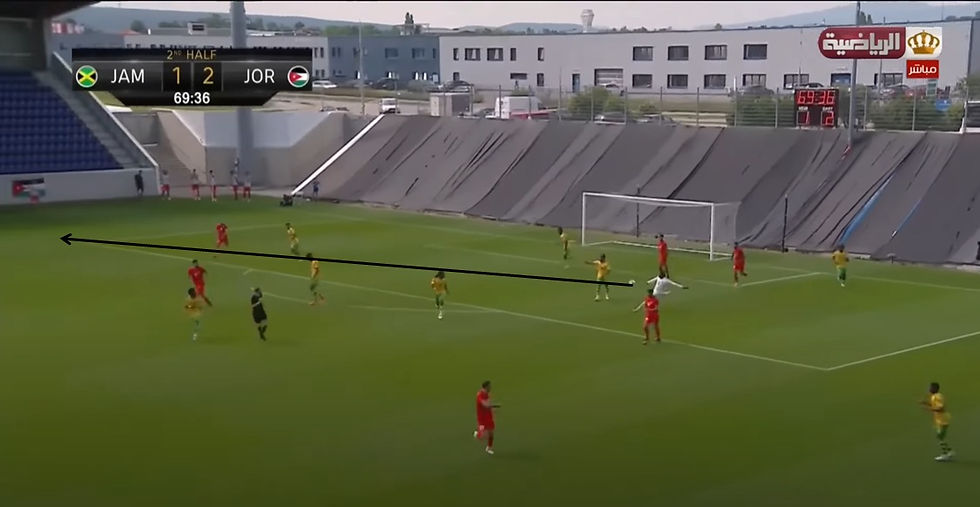
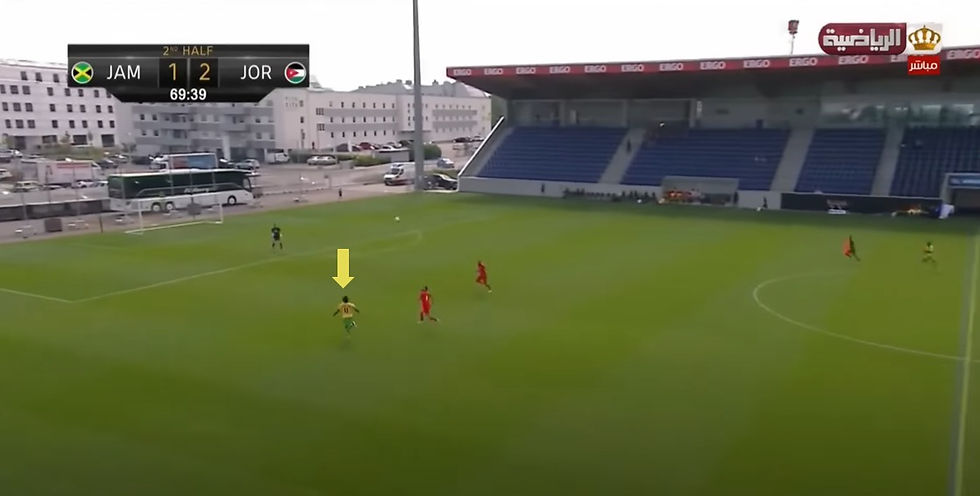

When a long ball isn’t played directly from the GK or CBs, Jamaica look to progress play out wide through the FBs. Sometimes in these progressions there are passing sequences that create an overload on the wing between the FB, WM and near sided CM or FW looking to get the ball forward again as quickly as possible and get it into dangerous areas which as mentioned is the core principle of Hallgrímsson’s side in possession. An example of this is displayed from the game against Mexico.

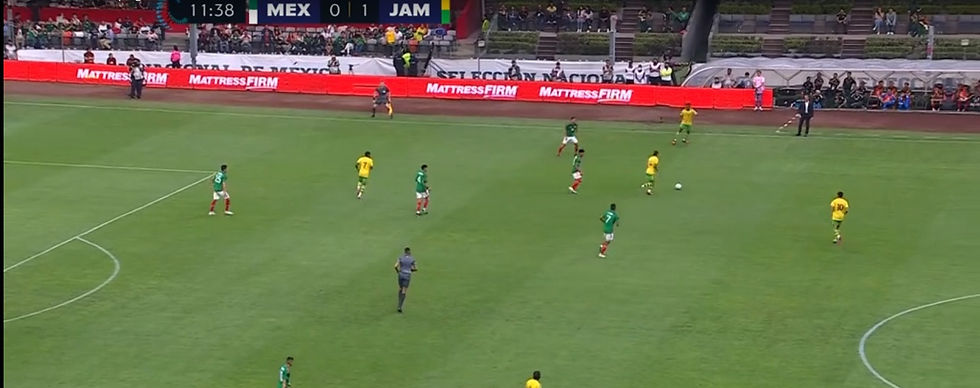


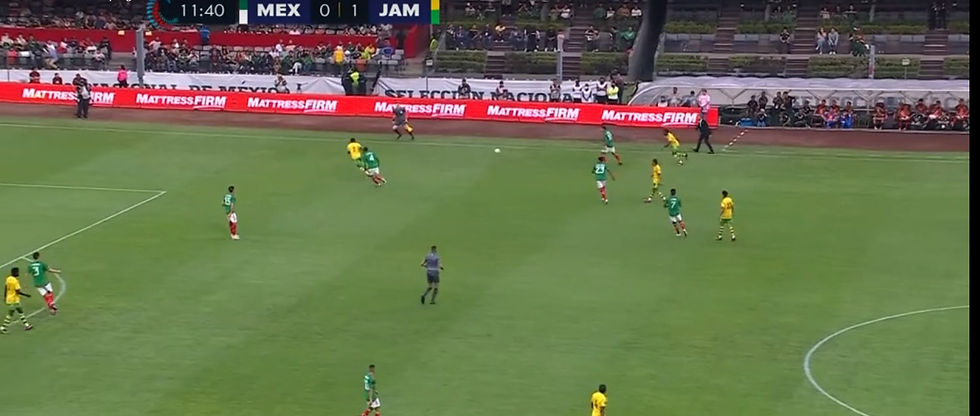

This directness aligns well with how Jamaica play in transition, once the ball is one the immediate intention is to get forward and in this transition phase from defense to attack, usually the ball is carried into space through quick, agile players such as Leon Bailey or passed into space (especially out wide) for a player running on.
Set Pieces
Lastly, as mentioned earlier, one of the key ways in which Hallgrímsson’s sides create opportunities are through set pieces which has been seen so far with Jamaica mainly through corners and long throw ins.
On free kicks, once more the aim is to get the ball in the box. One of the best examples of this, comes from the game against Jordan. Where many teams would play short and build up from this deep, Jamaica look to get the ball into the box on this free kick and win the first contact.


On throw ins, Jamaica tends to be as direct as possible and take throw ins either two ways. The first is long directly into the 18-yard box for a flick on, second ball or just getting the ball generally into the penalty area.

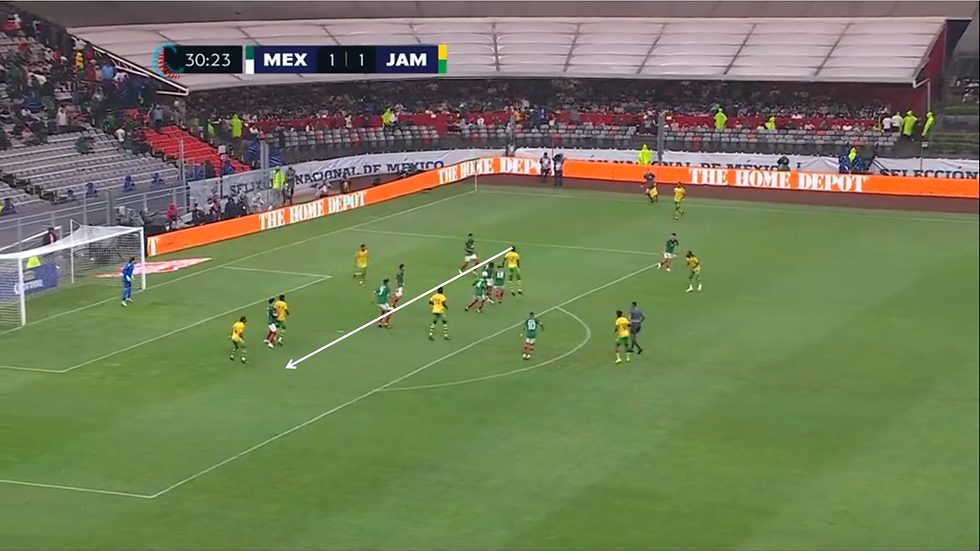


The second way is through a direct long throw down the flank to get the ball again as deep into the attacking area as possible with the hope of again a cross in, second ball or flick on to create a chance. This is usually done when the throw in is in Jamaica's half.


A main tendency of Jamaica through corners as well is to essentially mark the opposition keeper to disrupt his ability to protect the area and seek to play the ball into the corridor of uncertainty (sometimes aimed at either the near post to flick on or the far post) to create confusion amongst the opposition keeper and defenders. A perfect example of this, is the second goal against Mexico in the Nations League which in fact was an opportunity developed from a long throw that became a corner.
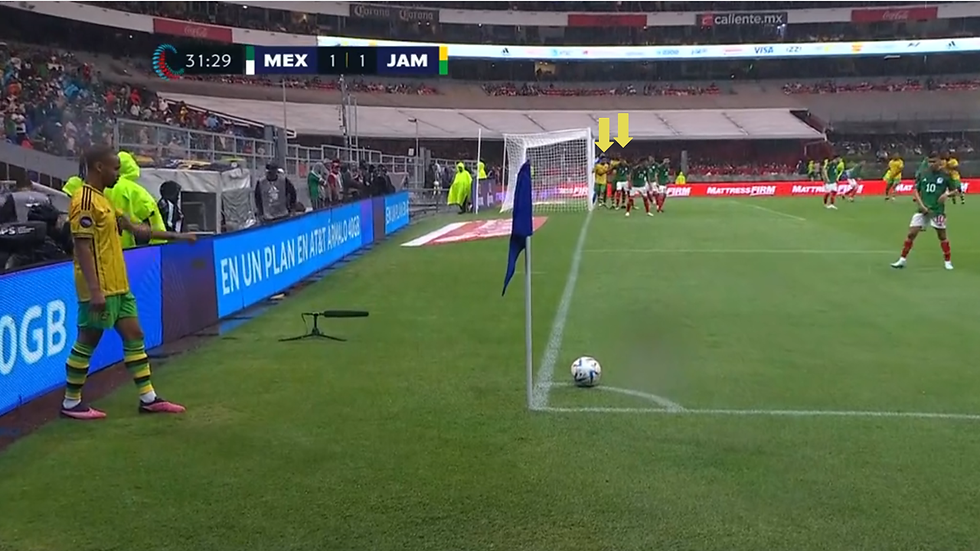

When defending corners, Jamaica’s main principle is a zonal system that prioritizes protecting the 6 yard box and goal frame.

Conclusion
The frank reality is that Hallgrímsson’s Jamaica is still a work in progress. The identity and patterns of play of the team are still under construction and not 100% clear. However, based on these recent matches and Hallgrímsson’s history there is good reason to preview what the core principles and intentions of this identity and potential patterns are. Hallgrímsson seeks to set up the side to defend first in 4-4-2 with organization and discipline and then create chances in a very direct, route one manner through long balls, set pieces and counter attacks. This has been seen through the recent friendlies and Nations League game versus Mexico. The 2023 Gold Cup can be a decent opportunity for Jamaica to be the first Caribbean nation to win the trophy. However, for that to happen Hallgrímsson’s Jamaica has to:
• Avoid sloppy, avoidable fouls and turnovers
• Maintain defensive discipline and organization
• Be clever on set pieces
• Get the final pass and shot right when the ball is in dangerous areas (which has been a weakness so far)






Comments